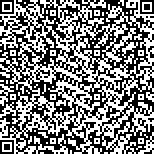孙莉敏,王鹤玮,徐国军,等.运动想象联合常规康复训练促进脑卒中患者功能恢复的静息态功能性磁共振研究[J].中华物理医学与康复杂志,2019,41(2):84-90
扫码阅读全文

|
| 运动想象联合常规康复训练促进脑卒中患者功能恢复的静息态功能性磁共振研究 |
|
| |
| DOI:DOI:10.3760/cma.j.issn.0254-1424.2019.02.002 |
| 中文关键词: 静息态功能性磁共振 运动想象训练 常规康复训练 脑卒中 脑重塑 |
| 英文关键词: Resting-state functional magnetic resonance imaging Functional magnetic resonance imaging Motor imagery training Stroke Cortical reorganization |
| 基金项目:国家自然科学青年基金项目(81401859);上海市卫生和计划生育委员会资助项目(201440634);上海市闸北区卫生局资助项目(面上2014MS06) |
|
| 摘要点击次数: 12407 |
| 全文下载次数: 8925 |
| 中文摘要: |
| 目的 利用静息态功能性磁共振成像(fMRI)研究脑卒中患者运动想象训练(MIT)联合常规康复训练后上肢功能恢复潜在的脑重塑机制。 方法 选择10例脑卒中偏瘫患者,进行MIT,每周5次,每次约30 min,共4周,同时进行常规康复训练,每周5次,每次约40 min,共4周。另选取10例年龄和性别与MIT组相匹配的健康受试者作为健康对照组。干预前和干预4周后,应用Fugl-Meyer运动功能量表上肢部分(FMA-UE)和改良Barthel指数(MBI)评估受试者的上肢运动功能和日常活动能力。干预前、后分别对患者进行fMRI检查,统计患侧初级运动区(M1)与全脑各脑区间的功能连接,计算M1和初级感觉区(S1)的偏侧化指数(LI)。 结果 干预后,MIT组FMA-UE评分从[(23.3±14.9)分]升高到[(33.6±13.6)分],MBI从[(58.0±15.5)分]升高到[(72.5±16.2)分],差异均有统计学意义(P<0.01)。MIT组患者患侧M1与健侧MI、健侧S1、健侧额叶的功能连接增强,患侧M1与患侧旁中央小叶、患侧前扣带回的功能连接也增强。MIT组干预前脑卒中患者的LI在M1、S1两区均较健康对照组明显增加(干预前LIM1为0.43,LIS1为0.37,健康对照组接近于0),干预后LIM1和LIS1均有所降低,并趋向于健康人数值(干预后LIM1为0.22,干预后LIS1为0.34),LIM1显著下降(P<0.05),LIS1未显著下降(P>0.05)。 结论 MIT联合常规康复训练可改善脑卒中患者的上肢运动功能和日常活动能力,经过4周干预后患者患侧M1和健侧M1的功能连接被显著修复,和双侧多个非初级运动脑区的功能连接也增加,逐步恢复了双侧初级运动区功能连接的对称性,这些可能是运动想象联合常规康复训练改善脑卒中患者运动功能的脑重塑机制。 |
| 英文摘要: |
| Objective To measure the efficacy of combining motor imagery training (MIT) with conventional therapy in improving stroke patients′ upper-extremity function. And to seek a cortical reorganization mechanism associated with the improvement using resting-state functional magnetic resonance imaging (rs-fMRI). Methods Ten stroke survivors were selected as an experimental group. They were given motor imagery training for four weeks (30 minutes a day, 5 days a week) and conventional rehabilitation therapy (40 minutes a day, 5 days a week). Another 10 healthy counterparts were the control group. Before and after the four weeks of treatment, both groups were assessed using the upper extremity Fugl-Meyer assessment (FMA-UE) and the modified Barthel index (MBI). Moreover, rs-fMRI was conducted to assess functional connectivity between cortical regions and the ipsilesional primary motor cortex (M1) before and after the intervention. The laterality index (LI) of the primary motor or sensory cortex was also calculated. Results After the intervention, the average FMA-UE and MBI scores of the experimental group had increased significantly. After MIT and conventional therapy there was increased functional connectivity between the ipsilesional and contralesional M1 areas, and between the ipsilesional M1 and contralesional primary sensory cortex (S1) and frontal lobe, the functional connection between the ipsilesional M1 and the ipsilesional paracentral lobule and the anterior cingutate was also increased. More specifically, the LI relating M1 and S1 decreased after the intervention, tending toward the normal level. LIMI decreased significantly. Conclusion The 4-week regimen of motor imagery training and conventional therapy resulted in functional improvement in the upper limbs and greater ability in the activities of daily living. The observed improvements may be due to cortical reorganization, including better functional connectivity between the bilateral M1 areas and increased connectivity between the ipsilesional M1 area and some non-motor areas. There is some recovery of symmetry in the bilateral primary motor cortex. |
|
查看全文
查看/发表评论 下载PDF阅读器 |
| 关闭 |